Boric acid and other boron-containing compounds such as borax and disodium octaborate tetrahydrate (DOT), collectively called sodium borate salts, are well-known for their insecticidal properties. One of the earliest mentions of borates in pest control goes back to the late 1800s, in which borax was recommended as a bait toxicant for controlling cockroaches and ants (Riley, 1889). Boric acid and borates are currently used as active ingredients in many products to control pests in urban and agricultural settings. These products come in many different formulations, such as dust (pure compound); liquid spray; and granular, liquid, or gel baits.
Since its registration with the U.S. Environmental Protection Agency in 1948, boric acid has been in use to control various pest insects. Boric acid is sold as a general-use dust for controlling cockroaches, silverfish, firebrats and ants. Also, it is also available as pre-mixed granular, liquid, or gel baits for controlling ants or other small arthropod pests.
Boric acid is mistakenly considered by some references as a desiccant dust. However, scientific evidence suggests boric acid’s sorptive property is negligible when compared to true desiccant dusts, such as silica gel or diatomaceous earth. Some studies as old as 1975, indicate boric acid is in fact a stomach toxicant (Ebeling et al., 1975). Another study showed that when ingested by insects, boric acid damages their midgut and causes death by starvation (Cochran, 1995). A more recent study suggests boric acid also has neurotoxic properties (Habes et al., 2006). If you are not confused enough, boric acid may have multiple ways of entering an insect’s body. In addition to oral ingestion, boric acid can enter an insect’s body by penetrating the cuticle (Ebeling et al., 1975). Boric acid and sodium borate salts are soluble in water. Borate salts are generally more soluble in water than boric acid. Borax is more soluble in water than boric acid, and DOT is the most soluble salt among the three (Schubert, 2000). Lastly, even if boric acid is a relatively safe compound, it should be used with caution, especially around children and pets.
Mode of action
The toxicity of boron-containing active ingredients is dependent on the amount of boron in their formulation. For example, anhydrous borax is 21.5 percent boron whereas DOT and boric acid are 21 percent and 17 percent boron by weight, respectively (Klotz et al., 2000). When ingested, boric acid dust enters the alimentary canal of German (Fig. 1) and American cockroaches and gets accumulated in the crop, a part of the foregut. This suggests that cockroaches’ gizzard (a small valve-like mechanism in the insect gut) blocks most of the dust particles from passing any further. However, the ingested boric acid will eventually kill the cockroaches in a matter of a few days. This indicates that boric acid in solution can still reach the latter part of the gut, and get absorbed from the gut (Ebeling et al., 1975).
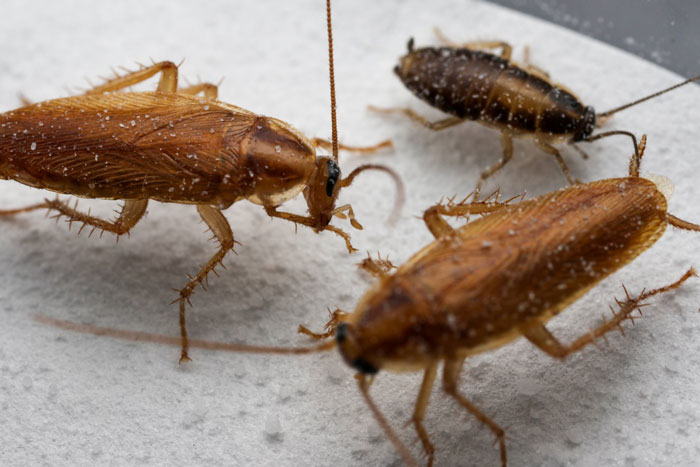
Figure 1: These German cockroaches were exposed to boric acid dust. The cockroach on the left is grooming its front leg. This behavior will cause the cockroach to ingest the boric acid. PHOTO: DONG-HWAN CHO
For insect groups that do not have chewing mouthparts, boric acid dust may not be effective. For example, boric acid dust was not effective in controlling bed bugs (they have pierce-sucking mouthparts to feed on blood), even at 10 times the label rate. However, boric acid was effective when it was fed to the bed bugs using an artificial feeding system (Sierras et al., 2018).
Borax and DOT are incorporated in some commercial ant baits. Ready-to-use (RTU) products usually contain anywhere from 1 percent to 5 percent of borax or DOT. Some of the products can be diluted to 1 percent or 2 percent solutions. Boric acid, borax, or DOT can offer a delayed killing at the lower concentrations (<1 percent). The delayed killing would maximize the transfer of insecticide between individual ants, effectively impacting large, multi-nest ant colonies. However, this requires the customer to understand the process fully and to be patient. Higher concentrations (>1 percent) will provide faster kill for foraging ants, but their colony-wide impact may be limited due to suboptimal feeding (feeding deterrence) and lower transfer effects.
Boric acid may enhance the efficacy of chemical treatments when combined with other active ingredients. For example, it was shown that boric acid can increase the virulence of the insect-killing fungus, Metarhizium anisopliae, in German cockroaches (Yang et al., 2021). Some insect products combine borates with pyriproxyfen or imidacloprid while some wood preservative products incorporate copper hydroxide in addition to borates (EPA database). Nevertheless, the exact interactions between these insecticides and boric acid warrant more research.
Repellency/deterrence
Boric acid is generally known to be non-repellent when applied at lower concentrations. In one study, boric acid dust showed minimal repellency when compared to silica aerogel, fumed silica, calcium silicate and diatomaceous earth silica (Moore, 1972). Being non-repellent is a major advantage in pest control since pests will not avoid the treated area and will be exposed to the toxicant, leading to higher pest mortality.
Borates may have deterrent effects at higher concentrations. For example, it was shown that sugar water containing boric acid at a rate >1 percent is less palatable than the clean sugar water when tested on Argentine ants (Klotz et al., 2000). One study on German cockroaches demonstrated that when given a choice between pure ground rodent chow and rodent chow mixed with dry boric acid or DOT, German cockroaches preferred the pure rodent chow (Strong et al., 1993). Western drywood termites appeared to avoid feeding on wood treated with borate compounds (Rust & Venturina, 2009).
Furthermore, feeding responses to different boron-containing compounds could vary between different insect species. For example, laboratory experiments showed that Argentine ants (Linepithema humile) accepted sucrose solution baits containing boric acid more readily than those having borax solutions, whereas carpenter ants (Campnotus mus) accepted borax solutions better (Sola et al., 2013). In another study, Argentine ants did not show any preference between 1 percent boric acid and 1 percent DOT solutions (Klotz et al., 2000).
Safety
Boric acid and borate salts are relatively safe to vertebrates (Oral LD50 = 2.6-4.1 g/kg in rats). Liquid baits generally pose a low risk to humans and animals since their borate concentration is low (1 percent to 5 percent). In contrast, borate dusts are typically available as a semi-pure compound (95 percent to 99 percent). Thus, dust formulation may pose a higher risk to humans via inhalation, contact, or ingestion. When inhaled, boric acid dust can cause dry throat, nose, and mouth in human (Garabrant et al., 1984). Boric acid absorption through intact skin is limited in humans (Stüttgen et al., 1981; Friis-Hansen et al., 1982). Boric acid ingestion may cause vomiting, abdominal pain and diarrhea in humans (Litovitz et al., 1988). Risk of hand-to-mouth exposure in young children can be significant when carpet surfaces are treated with large amount of boric acid dust (U.S. Environmental Protection Agency, 2016). Thus, caution should be taken when using boric acid dust, especially in residential and school sites where children and pets are present. In a study on laboratory rats, oral administration of 250 mg/kg body weight of boric acid for 60 d significantly reduced sperm quality and testicular DNA content (El-Dakdoky & Abd El-Wahab, 2013). Nevertheless, such prolonged exposure to high levels of borate dusts may not be very common. Furthermore, negative developmental and reproductive effects of boron have not been ascertained in humans, even in populations exposed to high amounts of boron (Bolt et al., 2020).
Summary
Based on the available literature, boric acid kills insects primarily by one or more of the following ways:
1. Damaging the gut lining and disrupting nutrient absorption.
2. Causing disorientation, tremor and paralysis through neurotoxicity.
It can enter the body of cockroaches through digestion as well as cuticular absorption. However, some insects with sucking mouth parts, such as bed bugs, may not be effectively controlled by boric acid dust. Borax and DOT are similar to boric acid but are more soluble in water and hence used more commonly in baits. Some ant species have shown a preference toward similar concentrations of boric acid or borax over other borates, but other species do not show such a preference.
Although not highly toxic to humans, exposure to large amounts of borates can cause health problems. Application of dry dust by non-professionals can be potentially problematic in residential spaces.
References
Bolt, H. M., Başaran, N., & Duydu, Y. (2020). Effects of boron compounds on human reproduction. Archives of Toxicology, 94(3), 717–724. https://doi.org/10.1007/s00204-020-02700-x
Ebeling, W., Reierson, D. A., Pence, R. J., & Viray, M. S. (1975). Silica aerogel and boric acid against cockroaches: External and internal action. Pesticide Biochemistry and Physiology, 5(1), 81–89.
El-Dakdoky, M. H., & Abd El-Wahab, H. M. (2013). Impact of boric acid exposure at different concentrations on testicular DNA and male rats fertility. Toxicology Mechanisms and Methods, 23(5), 360–367.
Friis-Hansen, B., Aggerbeck, B., & Jansen, J. A. (1982). Unaffected blood boron levels in newborn infants treated with a boric acid ointment. Food and Chemical Toxicology, 20(4), 451–454.
Garabrant, D. H., Bernstein, L., Peters, J. M., & Smith, T. J. (1984). Respiratory and eye irritation from boron oxide and boric acid dusts. Journal of Occupational Medicine.: Official Publication of the Industrial Medical Association, 26(8), 584–586. https://doi.org/10.1097/00043764-198408000-00013
Klotz, J. H., Greenberg, L., Amrhein, C., & Rust, M. K. (2000). Toxicity and Repellency of Borate-Sucrose Water Baits to Argentine Ants (Hymenoptera: Formicidae). Journal of Economic Entomology, 93(4), 1256–1258. https://doi.org/10.1603/0022-0493-93.4.1256
Litovitz, T. L., Klein-Schwartz, W., Oderda, G. M., & Schmitz, B. F. (1988). Clinical manifestations of toxicity in a series of 784 boric acid ingestions. The American Journal of Emergency Medicine, 6(3), 209–213.
Moore, R. C. (1972). Boric Acid-Silica Dusts for Control of German Cockroaches1. Journal of Economic Entomology, 65(2), 458–461. https://doi.org/10.1093/jee/65.2.458
Riley, C. V. (1889). Some insect pests of the household. Bed bugs and red ants. Insect Life, 2, 104–108.
Rust, M. K., & Venturina, J. (2009). Evaluation of chemical localized treatment for drywood termite control. Final Report to the California Structural Pest Control Board, Sacramento, California. Also Available at Http://Www. Pestboard. ca. Gov/Howdoi/Research/2009_drywood_rpt. Pdf, 1–31.
Schubert, D. (2000). Boron oxides, boric acid, and borates. Kirk-Othmer Encyclopedia of Chemical Technology, 1–68.
Sierras, A., Wada-Katsumata, A., & Schal, C. (2018). Effectiveness of boric acid by ingestion, but not by contact, against the common bed bug (Hemiptera: Cimicidae). Journal of Economic Entomology, 111(6), 2772–2781.
Sola, F., Falibene, A., & Josens, R. (2013). Asymmetrical Behavioral Response Towards Two Boron Toxicants Depends on the Ant Species (Hymenoptera: Formicidae). Journal of Economic Entomology, 106(2), 929–938. https://doi.org/10.1603/EC12246
Strong, C. A., Koehler, P. G., & Patterson, R. S. (1993). Oral Toxicity and Repellency of Borates to German Cockroaches (Dictyoptera: Blattellidae). Journal of Economic Entomology, 86(5), 1458–1463. https://doi.org/10.1093/jee/86.5.1458
U.S. Environmental Protection Agency. (2016). Boric Acid/Sodium Salts Proposed Interim Registration Review Decision Case Number 0024.
Yang, R., Zhang, M., Schal, C., Jiang, M., Cai, T., & Zhang, F. (2021). Boric acid enhances Metarhizium anisopliae virulence in Blattella germanica (L.) by disrupting the gut and altering its microbial community. Biological Control, 152, 104430. https://doi.org/10.1016/j.biocontrol.2020.104430
The post The mysterious boric acid and its relatives appeared first on Pest Management Professional.
from Pest Management Professional https://www.mypmp.net/2023/07/21/the-mysterious-boric-acid-and-its-relatives/
Sacramento CA
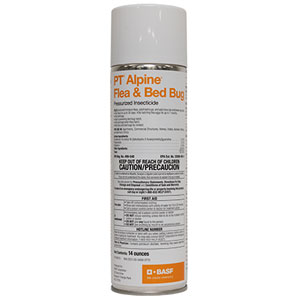
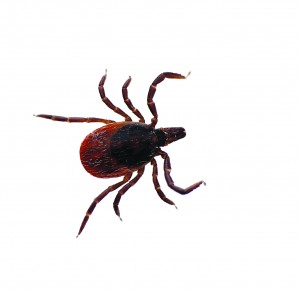










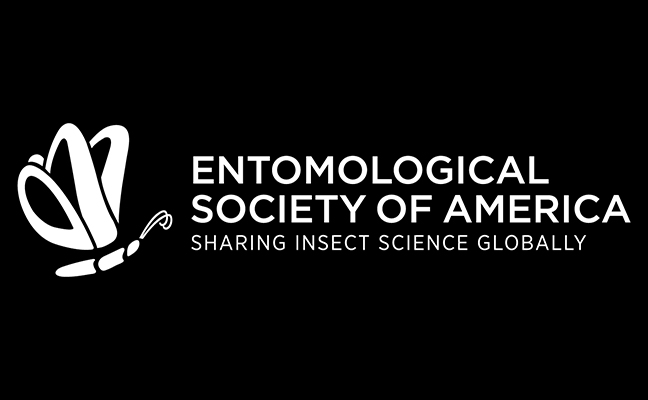





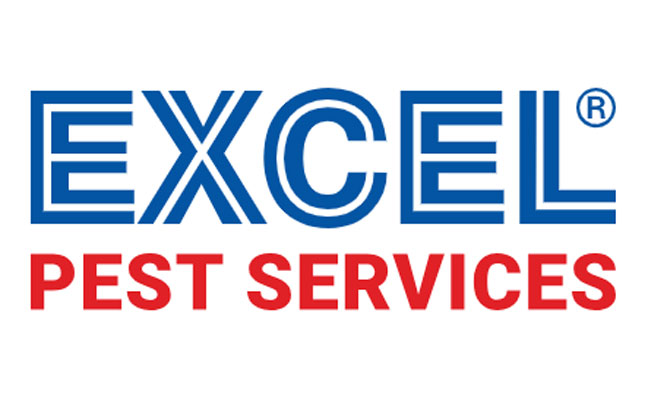 Given New Jersey’s high population density and the recent increase in hotel construction, effective pest management is crucial to maintain pest-free hotel environments. The company expects the area of pest management in hotels to grow in importance in the future.
Given New Jersey’s high population density and the recent increase in hotel construction, effective pest management is crucial to maintain pest-free hotel environments. The company expects the area of pest management in hotels to grow in importance in the future.









